If you have a lot of courage, extra stores of patience and a helmet, spend some time in a room of first-graders who have just downed some sugary drinks, high-carb snacks and sticky sweets. Add in factors like behavioral disorders and you’ll have to duck to avoid children hanging from the chandelier.
We may joke about it, but poor nutrition during childhood is a ticking time bomb for health problems down the road and for negative behavioral effects now. Parents of children with problems like attention deficit disorder, hyperactivity or autism have reason to be even more concerned about nutrition. Experts say a poor diet can exacerbate their symptoms; on the flip side, certain nutrients can help children achieve better focus, learning and mental development.
 Let’s Focus, People
Let’s Focus, People
It’s common for kids to be restless during long car rides or stare off into space in history class. But, some children routinely have a hard time keeping hyperactivity, distraction and impulsive behavior in check. When these behaviors become so overwhelming that children cannot perform well at school or make friendships easily, they are often diagnosed with attention-deficit disorder (ADD) or attention-deficit/hyperactivity disorder (ADHD).
According to the Centers for Disease Control and Prevention (CDC), these problems are far from rare. Reports say as many as 7% of all schoolchildren have ADHD, and some estimates place the percentage even higher (1). More than half of these kids (about 2.5 million) take prescription drugs to treat their disorders—many of which have serious, documented side effects.
It’s important for parents to understand that while ADHD can be managed through medical interventions, there may be a nutritional link to consider. Marci Clow, senior director of product research at Rainbow Light Nutritional Systems, Santa Cruz, CA, asks, “Ever heard the saying, ‘Garbage in, garbage out?’ Consuming nutrient-rich whole foods, will give a child better fuel efficiency than if they are fed processed convenience foods, excessive amounts of sugar, and hydrogenated fats and fast foods that are basically void of nutrient value…If we can fuel our children with good nutrition and nurture them with love, then they will have a lower risk of developing behavioral disorders.”
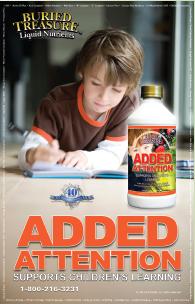 One documented connection to attention problems is with certain synthetic dyes and colors that are often added to processed foods. Says Evita Ochel B.Sc., B.Ed., C.H.N., a certified holistic nutritionist, biologist, educator, author, researcher and speaker in the areas of health, science and holistic wellness, “Over the past few decades, various food additives such as dyes, preservatives and flavors have been linked to ADD. Although mainstream researchers still refuse to admit a link between the two, many others in their studies have demonstrated significant improvements in children who were put on diets in which a major amount of chemical additives has been removed.”
One documented connection to attention problems is with certain synthetic dyes and colors that are often added to processed foods. Says Evita Ochel B.Sc., B.Ed., C.H.N., a certified holistic nutritionist, biologist, educator, author, researcher and speaker in the areas of health, science and holistic wellness, “Over the past few decades, various food additives such as dyes, preservatives and flavors have been linked to ADD. Although mainstream researchers still refuse to admit a link between the two, many others in their studies have demonstrated significant improvements in children who were put on diets in which a major amount of chemical additives has been removed.”
For example, Jean-Jacques Dugoua, N.D., chief medical officer at the Liberty Clinic in Toronto, Canada, and member of the Nutritional Magnesium Association, states, “The yellow dye tartrazine has been specifically shown to aggravate symptoms of ADHD.”
Other artificial dyes have been implicated, too. Red 3 and 40, Blue 1 and 2, Green 3 and Orange B all are said to cause learning and behavioral problems such as hyperactivity, learning disorders and ADHD (2). In 2007, researchers confirmed a link between artificial red and yellow food colorings, preservatives and increased hyperactivity (based on parent and teacher evaluations) (3). In 2004, a clinical study with a sample of 1,873 children concluded, “There is a general adverse effect of artificial food coloring and benzoate preservatives on the behavior of 3-year-old children, which is detectable by parents, but not by a simple clinic assessment” (4).
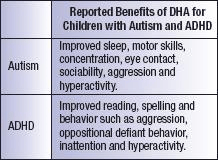 Other hyperactivity culprits, sugar and caffeine, are notorious for revving up children and should be consumed in moderation. Adds Garrett L. Smith, N.M.D., C.S.C.S., B.S., a naturopathic physician at Naturopathic Medicine of Southern Arizona/Laser Therapeutics, Tucson, AZ, “Reducing carbohydrate intake, particularly from processed foods, grains, dairy and sugar, helps prevent blood sugar swings.”
Other hyperactivity culprits, sugar and caffeine, are notorious for revving up children and should be consumed in moderation. Adds Garrett L. Smith, N.M.D., C.S.C.S., B.S., a naturopathic physician at Naturopathic Medicine of Southern Arizona/Laser Therapeutics, Tucson, AZ, “Reducing carbohydrate intake, particularly from processed foods, grains, dairy and sugar, helps prevent blood sugar swings.”
Such spiking blood sugar levels may cause bursts in energy and hyperactivity. Then afterward, kids may feel tired, cranky and moody. Needless to say, this interferes with concentration. Says Daemon Jones, N.D., a Washington, D.C.-based naturopathic physician, “When children are given fast foods or foods that have been highly processed, most of the essential nutrients for brain and body development are not present…The nutrient deficiency and blood sugar spiking cycles create a low-level nutrient deficiency that impacts their ability to think, focus, concentrate and learn.”
 On the contrary, diets with wholesome, unprocessed foods will help build a nutritional foundation that supports good concentration and behavior. “[A nutritious diet] gives the child a better balance of protein, carbohydrates and fats—all of which the body burns at different rates, keeping the child free from energy spikes and drops which only account for cranky moody, irritable, unfocused behavior,” Rose Anne Jarrett, founder and CEO of MimicCreme (Green Rabbit, LLC), Albany, NY, says.
On the contrary, diets with wholesome, unprocessed foods will help build a nutritional foundation that supports good concentration and behavior. “[A nutritious diet] gives the child a better balance of protein, carbohydrates and fats—all of which the body burns at different rates, keeping the child free from energy spikes and drops which only account for cranky moody, irritable, unfocused behavior,” Rose Anne Jarrett, founder and CEO of MimicCreme (Green Rabbit, LLC), Albany, NY, says.
Ashley Koff, R.D., a registered dietician based in Los Angeles, CA, agrees and adds, “Good nutrition helps address digestive issues, optimize metabolism and blood sugar, and provides the body with recognizable building blocks for efficient, effective utilization. This is key to developing sustainable energy. The body knows how to work with what it’s given and translates it effectively into energy.”
Consider these opinions about the link between nutrition and behaviors alongside a point raised by Bradley West, N.D., research advisor for Nordic Naturals, Watsonville, CA: “Many studies suggest that ADD is a nutritional deficiency and not a psychological disorder. Boys diagnosed with ADHD were found to have lower levels of omega-3 fatty acids and other studies have shown magnesium and zinc deficiencies in children with ADHD.”
Since these nutrients are often not found in ample quantities in the diet, supplementation may be important. Later in this article, we will cover important dietary supplements for children with ADHD, ADD and autism.
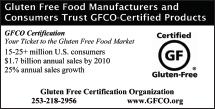 Skip the Wheat and Whey
Skip the Wheat and Whey
About one in 150 children (and one in 94 boys) has an autism spectrum disorder, a complex developmental disability in which individuals have a hard time with verbal/written skills, interacting with others and making eye contact (5). Experts speculate that autism is caused by abnormalities in brain function and structure, genetic components, negative environmental factors during pregnancy or a combination of factors.
Among the various therapies and interventions being studied to help autistic children is one centered on food choices. In fact, many families report some success with eliminating gluten (a protein found in wheat, rye and barley) and casein (a protein found in milk) from their children’s diets. Says Michael Bylinkin, director of marketing, Hero Nutritionals, San Clemente, CA, “Children who have food allergies are often diagnosed with hypersensitivity. Gluten and casein are two common food allergens that retailers should know about.”
Though much of the evidence is anecdotal, many parents say their children have improved cognition, language use and behavior while on a gluten-free/casein-free (GFCF) diet. Says Jonny Bowden, Ph.D., CNS, board-certified nutrition specialist, author and member of the nutritional advisory board for Barlean’s Organic Oils, Ferndale, WA, “I’ve known doctor friends of mine who’ve had kids with problems—including autism—that have taken their kids off gluten (or yeast, or other ‘problem’ ingredients) and noticed some improvements. No one is saying this ‘cures’ autism, but parents know when kids are responding better and when there has been a change. These parents are saying there is a noticeable one.”
In an interview with the late Shari Lieberman, Ph.D., published in a recent WholeFoods Vitamin Connection column (January 2009), Lieberman states, “There appears to be a cross-reactivity to gluten and casein…This cross-reactivity appears to be well documented in autism.” She goes on to describe an ongoing survey of 2,500 families with autistic children conducted by the Autism Research Institute. Parents were asked which therapy had the most dramatic impact on their child’s behavior and the GFCF diet stood out:
- Drugs: 15%,
- Dietary supplements: 30–35%,
- GFCF diet: 60%.
Some think the link between the GFCF diet and improvements in autism has to do with poor digestion, which is extremely common in autistic children. Clow of Rainbow Light explains how it may work: “It is hypothesized that some [autism] symptoms may be the result of opioid peptides formed from the incomplete breakdown of foods containing gluten and casein. Increased intestinal permeability, also referred to as ‘leaky gut syndrome,’ allows these peptides to cross the intestinal membrane, enter the bloodstream, and cross the blood-brain barrier, affecting the endogenous opiate system and neurotransmission within the nervous system. The resulting excess of opioids is thought to lead to behaviors noted in autistic spectrum disorders, and the removal of these substances from the diet parallels a change in autistic behaviors.” Such symptoms include zoning out, poor digestion and aggression (6).
To this explanation, Jarrett adds, “Research in the United States and Europe has found peptides in the urine of a significant number of children with autism. A doctor can order a urinary peptide test that can tell if proteins are not being digested properly.”
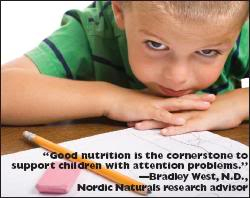 Eliminating certain food allergens may also help children with ADHD. “Food allergens irritate the brain and cause unruly behavior. We have seen several cases of children being sensitive to a food such as eggs. Remove the eggs and ADD/ADHD disappears, and grades improve,” says Billie Sahley, Ph.D., C.N.C., president and CEO of the Pain & Stress Center, San Antonio, TX.
Eliminating certain food allergens may also help children with ADHD. “Food allergens irritate the brain and cause unruly behavior. We have seen several cases of children being sensitive to a food such as eggs. Remove the eggs and ADD/ADHD disappears, and grades improve,” says Billie Sahley, Ph.D., C.N.C., president and CEO of the Pain & Stress Center, San Antonio, TX.
Julie Tomlinson, D.N. Med., nutritional specialist for ALL ONE, Santa Barbara, CA, offers some extra information to support this point: “Exposure to [certain food allergens] can lead to allergic-type reactions that result in hormone imbalances that send messages to the brain making concentration difficult and can sometimes lead to antisocial behavior.”
While a GFCF diet may not work for every child, retailers should be aware of it as an option. “If retailers are in the business of selling food, then they should know as much as they can about those foods that they sell,“ says Jarrett. Industry experts offer the following tips for retailers trying to help parents understand the GFCF diet.
- Advise parents trying this diet to look for hidden sources of gluten and casein. Gluten and gluten-like proteins may be found in food starches, semolina, couscous, malt, some vinegars, soy sauce, flavorings, artificial colors and hydrolyzed vegetable proteins. And, casein is sometimes added to non-milk products such as soy cheese in the form of caseinate. Whey, too, should be avoided. “Besides gluten and casein, some parents report that removing soy led to equal or greater improvements in their children. Because soy protein is similar to gluten and casein, some diet proponents recommend removing it if the child seems very sensitive,” says Jarrett.
-
 Don’t forget children’s supplements. Companies like Rainbow Light, Hero Nutritionals and Country Life Vitamins offer supplements that are gluten free.
Don’t forget children’s supplements. Companies like Rainbow Light, Hero Nutritionals and Country Life Vitamins offer supplements that are gluten free.
- Similarly, tell parents to be extra-careful labels readers in the grocery aisles. Says Kristin Selby Gonzalez, director of autism at Enzymedica, Port Charlotte, FL,“If the product isn’t clearly marked “Gluten Free/Casein Free” on the label, then there could be trace amounts of gluten and/or casein due to cross contamination. If it is not marked, it is recommended to call the company and ask directly if the facility takes precautions to keep it GFCF. Never assume just because it ‘appears’ to be GFCF that it is.” The Gluten Free Certification Organization may be an especially good resource for verifying if a company’s products are indeed gluten free. This group certifies production facilities and end products as gluten free and keeps track of which pass muster on its Web site, www.gfco.org.
- West of Nordic Naturals suggests knowing all forms and derivatives of gluten and casein. “There is a long list of ingredients that can contain these proteins, so educating staff and having an in-store document to reference would be advantageous,” he states.
- And, check out the Web site for The Feingold Association, Tomlinson suggests. This site offers much information on dietary programs for children with autism, ADD and ADHD. Other helpful sites include www.gfcfdiet.com and www.autism.com.
Nutritional Support for ADD/ADHD and Autism
Recent studies indicate that many children with autism and ADD have certain nutritional deficiencies in common. “Specialized laboratory testing often demonstrates sub-optimal levels of vitamins, minerals, amino acids and fatty acids in people with autism, which can be addressed with nutritional supplements,” Tomlinson says. Again, while dietary supplements cannot cure these disorders, it is important to ensure affected children have adequate amounts of the following nutrients in their diet.
|
Autism Education Coming to a Town Near You
|
Magnesium and other minerals. Magnesium, an important mineral on numerous fronts, is one of the most deficient nutrients in most American’s diets, says naturopath Jones. This is noteworthy because magnesium deficiency can exacerbate many developmental/neurological problems as well as emotional and mental stress, he says. “This combination of issues is often present in children and families dealing with autism, so I recommend magnesium in appropriate dosages for children,” Jones advises.
Ochel seconds the notion that magnesium has distinct benefits for autistic children. “Magnesium plays a huge role in the proper functioning of the nervous system and has been linked to alleviating anxiety, stress, tension, spasms, panic attacks and promoting proper sleep, just to name a few. All of these can be a regular occurrence in autistic children,” she says.
These are important points. After all, magnesium is said to have a calming effect. Says Rachel West, D.O., an osteopath in Santa Monica, CA, who frequently treats children with autism and ADD, “It is great to take in higher doses to help with relaxation, sleep and vasodilation. The va-sodilation is like making the pump wider so more blood can flow…It is also great for muscle tension, nervous tension and headaches, which many children have. [This] makes them have sensory issues.”
And, since many autistic children also have digestive problems, magnesium may offer some benefits in terms of proper food metabolism. More than 300 digestive enzymes need magnesium to function, says Ochel. “As children with autism suffer various intestinal damage and may actually be deficient in magnesium, higher doses than just those provided in food are needed to address these problems and ensure adequate supplies, she states.”
Given the benefits of magnesium for children with autism and ADD, it’s striking that studies show they are often deficient in this mineral. In one trial, 116 children with ADHD were evaluated and 95% had magnesium deficiency (7). In another, Dugoua states, “A study demonstrated that when you give magnesium-deficient ADHD children 200 mg of magnesium daily, their hyperactive behavior appears to improve.”
Other minerals such as iron, zinc, calcium and trace minerals are important, too, says Michael T. Murray, N.D., of Natural Factors, Everett, WA, in an essay published last month in WholeFoods Magazine. He states, “It is a well-known fact that children with iron deficiency demonstrate impaired intellectual performance.”
|
Supplements for Children with Autism or ADD/ADHD It’s not easy to get a fussy child to take his/her vitamins. Taking this into account, many companies have developed products with taste in mind; and for kids with autism and ADD/ADHD that have stomach issues, many products are intended to be easy to digest. Here are some select items in the category. ALL ONE Supplements offers Feingold Association- approved supplements for children with autism or learning difficulties such as its hypoallergenic kids’ formula. The powdered form makes it appropriate for this population as they usually have compromised digestion and may have trouble taking pills. Barlean’s Fresh Catch Kid’s DHA is a molecularly distilled, pharmaceutical-grade, fruit punch-flavored cod liver oil, abundant in EPA/DHA and vitamins A and D. Barlean’s all-natural Omega Burst are individually wrapped Starburst-like chews that offer great flavor and 123 mg of DHA/EPA. Yogurt- or smoothie-loving kids will happily take Barlean’s Kid’s Omega Swirl, says the company, which has the taste and texture of a lemon-zest fruit smoothie. Buried Treasure makes Added Attention (liquid supplement) to help increase learning abilities with DHA, B-vitamins, GABA, PS and more. Enzymedica makes Digest Basic, Digest, Digest Gold digestive enzymes. Capsules can be opened and mixed with food or drink. Another interesting formula for autistic/ADHD children is EFA Optimize, intended to enhance EFA absorption. Hero Nutritionals makes several gummy supplements for this population, including Yummi Bears Child Bright (improves concentration and attention span), Yummi Bears Omega, Yummi Bears DHA (to promote healthy brain development and vision function) and YB Multi Vitamin. Martek Corp. is the supplier of life’s DHA. All MimicCreme products (unsweetened, sweetened and sugar-free sweetened coffee creamers) are suitable for the gluten-free/casein-free diet. Made from whole foods (almonds and cashews), the creamers are high in omega-6/-9 and are a good source of magnesium, folic acid, phosphorus and other nutrients and vitamins. Natural Factors has the Learning Factors line, which includes Balanced Omega-3 Liquid Emulsion and Chewable Soft Gels (in peach), Daily Nutrient Boost w/ Pea Protein (in wild berry), Daily Nutrient Boost w/ Whey (in wild berry), Learning Factors Capsules, Daily Nutrient Boost Smoothie Mix (in wild berry) and Liquid DHA Blend (in lemon-lime). Nordic Naturals offers fish oil supplements in a variety of flavors and forms. Children’s DHA (in chewable soft gels or liquid), Ultimate Omega 500 (chewable, strawberry-flavored soft gels) and Omega 3-6-9 Junior (in soft gels or liquid) offer a high, therapeutic dose of EPA/DHA that children with autism usually need. All these products are gluten and casein free and have no artificial colors, flavors or preservatives. Pain & Stress Center manufactures the Brain Link Complex (powder), a balanced amino acid drink for autistic and ADD children. If a child can swallow a capsule, the company offers Super Balanced Neurotransmitter Complex (Super BNC) + glutamine, Anxiety Control and Teen Link + Glutamine. Also available is Stop A.D.D. Naturally by Billie Sahley, Ph.D., C.N.C. Peter Gillham’s offers the Natural Calm magnesium supplement, Natural Calm Bath (available through healthcare professionals) and Organic Life Vitamins in a liquid form (half dose for children). Rainbow Light’s Kids’ One MultiStars provide a complete nutritional system in a tasty, chewable, gluten-free tablet. Rainbow Light’s Active Health Teen Multivitamin/Mineral helps support physical and cognitive health in teens. Also for cognitive development are the DHA 250 Smart Essentials and Gummy Omegalicious formulas. For potent, bioactive probiotic support, Rainbow Light offers gluten-free ProbioActive 1B. |
In fact, author Janet Zand, L.Ac., OMD, Dipl. Ac., Dipl. CH, says it’s not uncommon for autistic children to lack other B-vitamins like B12, B5, B3 and folic acid in their systems. “An easily absorbed B-complex can begin to improve a multitude of symptoms including energy, mood and attention span,” she advises.
Autistic children may also benefit from extra vitamin C—an important free radical figher—whether or not they are deficient in the nutrient. Says Ochel, “Children with autism can be more prone to improperly managing free radicals, which can cause extensive damage in the body, especially the brain, thereby worsening the condition. As vitamin C plays a large role in the proper functioning of neurotransmitters, and offers a calming effect, it can prove to be very beneficial for autistic children.” DHA. Few experts debate the importance of the omega-3 DHA for those with ADHD and autism. With respect to the former, this nutrient has been studied to improve concentration. Says Bowden, “Studies clearly show that animals who are deficient in omega-3 fatty acids are most distractible and take longer to reach goals. A ton of research—notably by John Burgess and his team at Purdue University—has shown a connection between lower levels of omega-3s (specifically EPA and DHA) and ADHD. Burgess also found that those with low levels of omega-3s in their blood were far more likely to have the characteristic behavior problems of ADHD whether or not they were diagnosed with the disorder.”
Sheila Gautier, R.D., in scientific affairs at Martek, Columbia, MD, offers some insight into the connection between this omega-3 and the brain: “DHA plays a central role in the normal development and function of the brain and nervous system throughout life. Perhaps not surprising, as it is a major structural fat in the brain and represents about 97% of all omega-3 fatty acids in this organ.” And, DHA is concentrated at synapses, where it contributes to cell signaling and neurotransmission, she adds.
Research shows those with neurocognitive disorders such as ADHD and autism are deficient in omega-3s. In this month’s Research News section, we report one recent study in which many autistic children were found to lack polyunsaturated fats (PUFAs) in their systems. And in a 2008 article, researchers found “adolescents with ADHD continue to display abnormal essential fatty acid profiles that are often observed in younger children and distinctly different from normal controls of similar age” (8).
The reason for the deficiency, Gautier speculates citing other research, is that kids with ADHD may have an impaired ability to metabolize PUFAs. “The significance of which may be that they may have higher requirements for long-chain polyunsaturated fatty acids such as DHA,” she says. “Unfortunately, DHA intake in the United States is dramatically below recommended levels, particularly during pregnancy, nursing and childhood; thus compromising optimal nutritional status during a very important time of brain development and function.”
There’s some hope in supplementation, however. Even modest intake of DHA via diet or supplementation may improve symptoms in children with autism and ADHD. Of note, West of Nordic Naturals, points out “both language and learning skills improve with EPA and DHA supplementation.” And, according to Gautier, other benefits include the following:
Digestive enzymes. It bears repeating that many children with autism have trouble with digestion, and therefore may not be able to absorb all the nutrients they need for proper brain function. Says Gonzalez of Enzymedica, “Many of our children are enzyme deficient and are not manufacturing enough of their own enzymes.” Therapeutic enzymes may help offer digestive support and improve nutrient absorption.
Amino acids. Amino acids, especially those in powdered form, may also be suitable for children that have problems with concentration. According to Murray, “Amino acids from protein are very important to brain function as they can be used as neurotransmitters (i.e., compounds that transmit nerve impulses). The proper amount and ratio of neurotransmitters are essential for attentiveness, task completion and the ability to remain calm when appropriate.”
Sahley of the Pain & Stress center agrees, noting that glutamine can be helpful for this application. “Good nutrition is vital and supplementing with amino acids that create neurotransmitters is more than vital. The neurotransmitters help the brain make connections between the cells so communication can take place,” she says, and explains that children with ADD/ADHD and autism tend to burn neurotransmitters quickly. WF
References
- Centers for Disease Control and Prevention, “Attention-Deficit / Hyperactivity Disorder (ADHD): Data and Statistics,” www.cdc.gov/ncbddd/adhd/data.html, accessed Aug. 28, 2009.
- The Center for Science in the Public Interest, www.cspinet.org, accessed Aug. 28, 2009.
- D. McCann et al., “Food Additives and Hyperactive Behaviour in 3-Year-Old and 8/9-Year-Old Children in the Community: A Randomised, Double-Blinded, Placebo-Controlled Trial,” The Lancet, 370 (9598) 1560–1567 (2007).
- B. Bateman et al., “The Effects of a Double-Blind, Placebo-Controlled, Artificial Food Colourings and Benzoate Preservative Challenge on Hyperactivity in a General Population Sample of Preschool Children,” Arch. Dis. Child. 89 (6), 506–511 (2004).
- Autism Society of America, www.autism-society.org, accessed August 20, 2009.
- “Lost and Found,” Living Without, 14–19 (Oct./Nov.2009).
- T. Kozielec and B. Starobrat-Hermelin, “Assessment of Magnesium Levels in Children with Attention Deficit Hyperactivity Disorder (ADHD),” Magnes Res. 10 (2), 143–148 (1997).
- A.L. Colter, C. Cutler and K.A. Meckling, “Fatty Acid Status and Behavioural Symptoms of Attention Deficit Hyperactivity Disorder in Adolescents: A Case-Control Study,” Nutr. J. 14, 7–8 (2008).
Published in WholeFoods Magazine, Oct. 2009

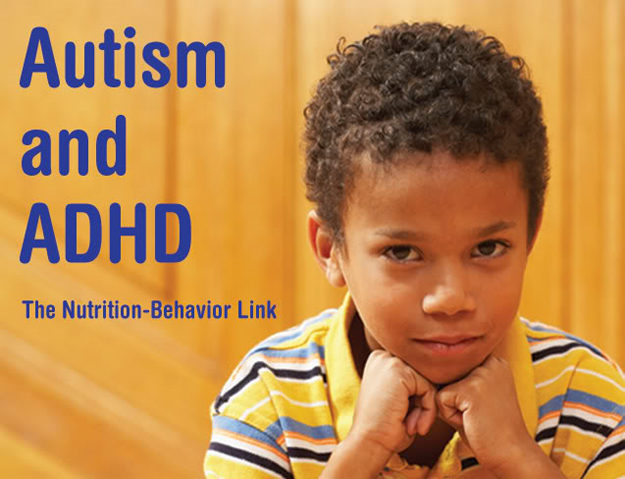
 Parents and professionals who want to learn more about dietary and other interventions for autistic children are in luck. An initiative of the Autism Hope Alliance, the Autism Grass Roots Tour (sponsored by Enzymedica) is offering free seminars about autism all over the country with speakers such as Kristin Selby Gonzalez, director of autism education for Enzymedica. According to the group’s Web site,
Parents and professionals who want to learn more about dietary and other interventions for autistic children are in luck. An initiative of the Autism Hope Alliance, the Autism Grass Roots Tour (sponsored by Enzymedica) is offering free seminars about autism all over the country with speakers such as Kristin Selby Gonzalez, director of autism education for Enzymedica. According to the group’s Web site, 








